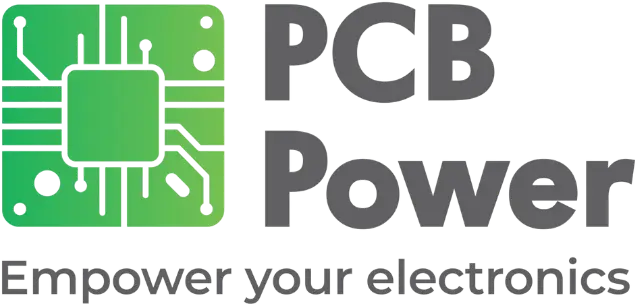
How Are PCB Layouts Priced?
Pricing PCB layout is quite straightforward, and there are different ways of doing it. In the industry standard way, a layout agency makes an estimate of the number of hours it will take to complete the , and multiplies this with their hourly rate. Although this method of pricing PCB layout appears simple, there are two variables in the equation. One is the estimate for the number of hours, and the other is the hourly rate. However, many PCB manufacturers use a simpler and more automated method of pricing PCB layouts.
As an eminent PCB manufacturer, we at PCB Power Market, provide a dedicated calculator on our website for pricing PCB layout. You must tell us the number of layers in your PCB, the total number of components it will use, and your desired lead-time. Our online calculator will give you a quote for your PCB layout .
Get your FREE quote today
Documents and Inputs Necessary for Pricing PCB Layouts
To start a printed circuit board layout, it is necessary for a few documents and inputs to be available upfront. The customer can provide original CAD files or their printed copies:
- Schematic Diagram
- Bill of Materials
- Mechanical Outline Drawings
- Netlist
Apart from the above, a customer may have specific constraints for the layout. They may provide these as additional documents, including:
- Basic Placement Plan
- Routing Constraints
- Layer Buildup
- Grounding Rules
- Signal Integrity requirements
- EMI/EMC requirements
Additional documents that prove helpful during layout are:
- Component Datasheets
- Component Footprint Library
- DFA/DFM Requirements
Before starting with the layout, we discuss further with our customers to improve our understanding of their requirements.
Estimating the Baseline Time for Pricing PCB Layouts
For any printed circuit board layout, some tasks are common. Time taken by these tasks make the baseline time for the layout. These are:
- Creating the schematic and component footprint library
- Placing the components within the PCB boundary
- Routing the components
- Producing outputs for the PCB manufacturer
At Power PCB Market, we estimate the baseline time taken by the above tasks based on the requested lead time, the total number of components on the board, and the number of layers the routing will involve. The complexity of the tasks also depends on the specific constraints the customer may have dictated.
Estimating Additional Time for Pricing PCB Layouts
Apart from the baseline time that we estimate as above, we also require additional time depending on the complexity of the board, and the specific constraints defined by the customer.
Even when the customer has provided the component footprint library, we must convert and assimilate them into the CAD software we use. Once we have the library in place, we proceed to import the footprints into the board layout. If the customer has not provided the component footprint library, we need to create this and verify the footprints against published documents provided either by the customer or the component manufacturer. This is a precision task and an important step, as it forms the foundation for the entire layout. The number of hours involved in this step is critical.
While placing the footprints of the components within the PCB boundary, it is necessary for us to follow the basic placement plan, if the customer has provided one. This could involve maintaining a fixed distance of pins from the edges of the board, spacing between components, and placing smaller components away from the shadow of larger ones.
Deciding the Number of Layers
One important issue that we must decide at this point is whether the number of layers defined by the customer is adequate. The price of the PCB layout and the price of the PCB itself depends to a large extent on the number of layers present. Several factors affect this decision, primarily:
- Pin Density of Components
- Routing Density
- Routing Topology
The circuit may be using close-pitch components (e.g., BGA), which take a longer time to route because of their pin density. At PCB Power Market, we estimate this based on number of pins per unit area. We may have to take a call for changing over the design of the board to HDI or high-definition interconnect technology when the pin density is beyond a specific value.
The customer may have specified a certain minimum and maximum trace width and spacing. Below a specified value, the specifications may qualify for a changeover to HDI. PCB layout pricing for HDI boards is higher than regular PCB layouts.
Routing all components within the specified number of layers involves setting up some layers as ground or power, following the grounding and power rules and routing to avoid EMI/EMC issues. Once we complete the placement, we must also take care of signal integrity issues for specific tracks. This may involve shielding some tracks or placing additional shielding between components.
Typically, the layout of a PCB is a compromise between effective routing layers and the board size. Oftentimes, the board size defined by the customer may not be adequate for routing all components within the specified number of layers. In such cases, PCB Power Market and the customer must work out the actual number of layers necessary to route the PCB. We include the time involved for calculating the PCB layout pricing.
Feedback from DFA/DFM Studies
Apart from being designers, PCB Power Market is also an established PCB manufacturer and assembler. After completing the layout design, we usually carry out a Design for Assembly or DFA and a Design for Manufacturing or DFM study. The study basically estimates the difficulties involved in manufacturing or assembling the board. Some changes in the layout may be necessary depending on our study. We also take into account such changes for PCB layout pricing.
Additional factors Affecting PCB Layout Pricing
Apart from the above factors affecting the PCB layout pricing, there are others as well. Layout rates can go up depending on the urgency of the customer for the turnaround, seniority of the designer involved, technologies involved in the design, choice of specific CAD tools, and the variety of designs the customer is offering for converting into layout.
Conclusion
Pricing of PCB layouts can vary from one PCB manufacturer to another. For a customer to decide on a manufacturer to use depends on the manufacturer’s expertise, experience, and quality of output. In broad terms, PCB layout pricing is higher for boards with higher component count, higher pin density, and larger number of layers.



